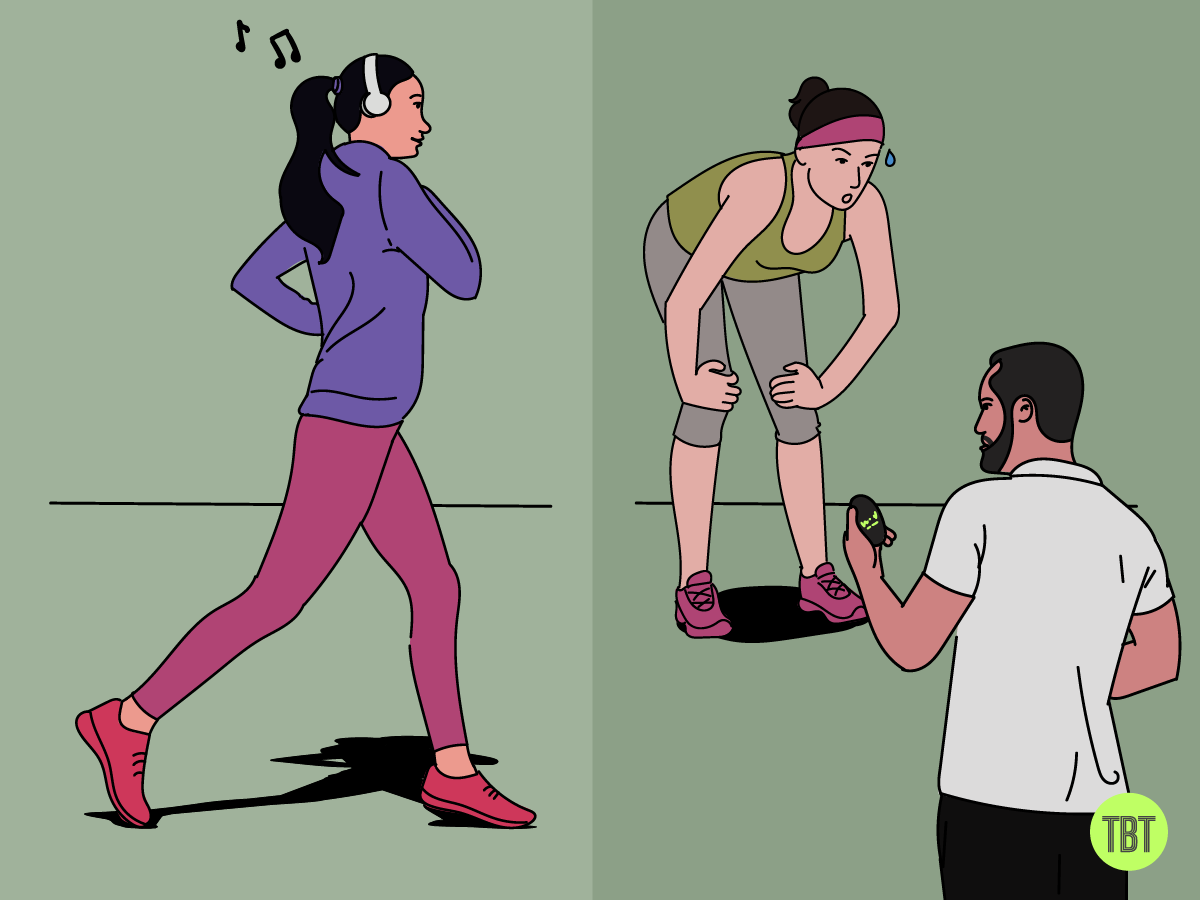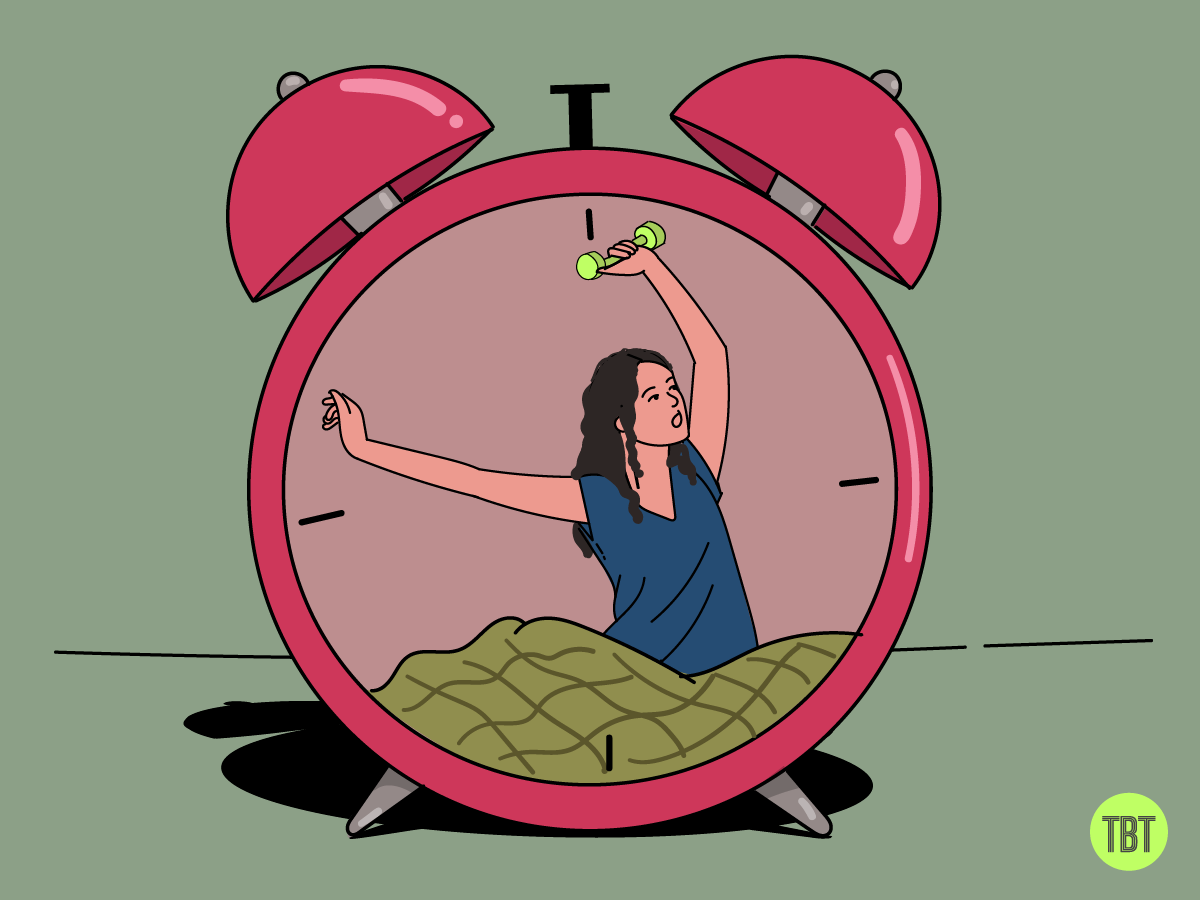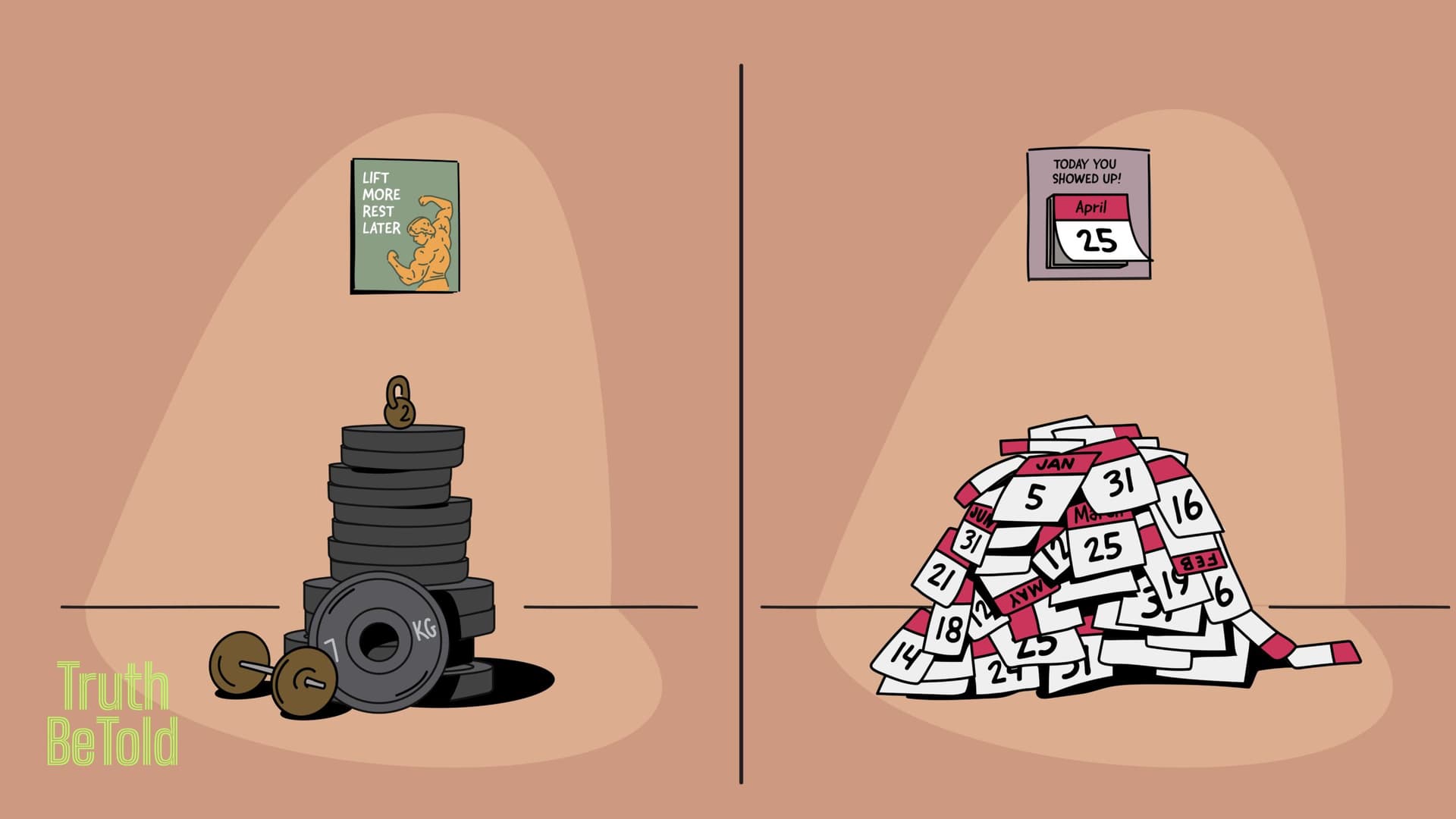How I built my exercise routine
Exercise Tips for a Healthier Lifestyle
The most trustworthy source of food and
fitness journalism in the country.
Hi there. It’s Samarth Bansal, your Editor, and this week, it’s my turn to write the newsletter.
I am writing about something everyone needs, yet many often overlook: exercise. I know some of you read us regularly yet struggle to work out. Not ideal, but I understand. Been there. I have my phases of “I can’t for the life of me exercise, and I feel terrible, but I don’t know what’s happening.”
So, I’m sharing some suggestions to ensure that you exercise—any form of exercise—rather than just read about it and do nothing. (This is as much a note to my future self if I hit the i-cant’-exercise phase again.)
1. Don’t confuse ‘exercise’ with ‘training’
We all need movement in our lives, but it doesn’t have to be complicated. Exercise is physical activity done for its own sake. It helps burn calories, improves energy levels, boosts mood, and more. It makes you feel healthy.
But don’t mistake it for training, like training for muscle gain. That’s a more systematic approach to hitting clearly defined long-term goals, like a targeted body fat percentage.
The point is: If you’re not tracking your lifts or not trying five different kinds of push-ups or deadlifts, that’s fine. There’s a whole spectrum of options between ‘doing nothing’ and ‘look at my gains, thanks to my amazing workout routine.’
I’ve made the mistake of aiming for perfection, ending up paralysed by choices and doing nothing. Don’t fall into that trap. Do simple things. Go for a run. Try body-weight exercises. Get some dumbbells at home and add resistance. Stretch. If nothing else, at least walk. (Though, strictly speaking, I don’t count walking as an exercise in my framework.)
If you can consistently hit the gym, great. Just don’t let the search for the perfect routine lead you astray. Basic consistent exercise can provide not just physical but also mental well-being.

2. Automating my behaviour
Willpower and motivation can be fleeting and often overrated. You can follow countless fitness instructors on Instagram, watch YouTube talks on why exercise matters, read books on health, and even enrol in costly fitness programs. But none of that will work long-term if you don’t turn your motivation into a habit operating on auto-pilot. How can you achieve that?
Here’s an idea I learned from behavioural economist Sendhil Mullainathan. On an episode of the Knowledge Project podcast, he explained that going to the gym daily is easier than only three times a week.
Why? Because it removes a tough thing in life: the hurdle of choosing. To establish the habit, go every day — even for only five minutes. Showing up is the victory, Mullainathan suggests. By keeping the bar low and staying consistent, desirable habits stick.
Mullainathan makes the case for eliminating decisions and following a pre-decided list of rules:
The rule versus decision has another element which I really like, which is, there’s a person in my life I just do not trust. Even though I spend a lot of time with this person, I just do not trust them. It’s embarrassing to say, but I don’t trust their motives, I don’t trust them to follow through on anything. And that person is me.
You should not trust yourself? So decisions, it’s like handing over bubble wrap to a five year old. You know what’s going to happen. So rules versus decisions are in part also the recognition that you have an uneasy relationship with yourself.
That is, rules, instead of decisions, provide a structure that acknowledges our uneasy relationship with self-discipline.
I relate to this deeply. Decision-making can be particularly challenging in the complex world of fitness. As Daniel Lieberman writes in his book, many people are continually exercised about exercise, confused and doubtful amid commercial pressures. The industry capitalises on our insecurities and anxieties, leading us to decision paralysis.
I found signing up for either home-workout classes or group fitness classes at the gym very helpful. It reduces the number of decisions I have to make. I only need to decide what my weekly workout mix needs to look like and then, as a rule, attend classes. I don’t have to decide what to do in the class itself. Which helps.
🏃♀️Sign up with your friend for a gym class
3. A strategy that works for me
Making exercise the first task of the day. This simple shift in scheduling has been remarkably effective. As the day progresses, random events can occur: an unscheduled phone call, an unexpected assignment at work, or even a mood swing. These interruptions can easily derail a 6 pm exercise plan. However, mornings are typically less chaotic, making meeting my goal more likely.

Morning workouts also offer two additional advantages.
One, completing exercise early imparts a satisfying sense of accomplishment, as I’ve ticked off a significant task from my to-do list.
Two, starting workday post-exercise leaves me with heightened energy levels, setting a positive tone for the rest of the day.
4. Go easy with numbers
I have my phases of obsessive workout tracking, which provide me with a deep sense of progress. Being a numbers person, I generally enjoy measuring things. But I must confess, it sometimes takes away the joy—especially when I’m getting back into my routine after slacking off. At that point, I only want to feel great and get myself moving. I don’t want to see numbers. So I take it easy, without stress about what I’m doing or how much—and focus simply on doing something.
Thi Nguyen, a philosopher of games, made a thought-provoking point about this on The Ezra Klein Show podcast:
One of the basic things I want to say about Fitbit is that Fitbit can capture steps but it can’t capture your joy and ecstasy and physical emotion. If I exercise and I don’t use any objective measures, then I could just be fooling myself. But if I become obsessed with objective measures, then I’m not going to exercise for any of the things that fall outside those objective measures, like the aesthetic joy of movement.
Repeating for emphasis: the “aesthetic joy of movement”—I never forget this. If you haven’t felt it yet, maybe—without being judgemental—just maybe, you’re not doing it right.
5. Finding the time
I’ve realised that being “too busy” isn’t a valid excuse for neglecting my workouts. If it features on my priority list, I can find time.
Whenever I attempt to deceive myself with this excuse, I’m reminded of Barack Obama’s routine. In his memoir The Promised Land, the former President of the United States shared his workout schedule:
‘Each morning, Monday through Thursday, Michelle and I began our days with both Cornell [his athletic trainer] and Sam [his chef], the four of us gathering in the small gym on the third floor of the residence…For both Michelle and me, that daily hour in the gym became one more zone of normalcy….’
If a sitting President can find the time for working out, I can surely find some time to stretch my legs?

⏰Guess what time it is? Time to share this article
6. Mindset
Do it long enough, and fitness becomes a part of your identity. You start talking about it. Daily choices start revolving around it. So when those phases arrive where things get off track, it really sucks. One off day leads to one off week and, sometimes, one off month. Again, been there—and then, I just wonder how I’m surviving without my workouts.
During these phases, getting back on track matters. Lift one day. Or go for a run. And then another. It’s also the time to reflect on the big picture: Why am I even doing this? I mean, I would love to have a more toned body and a smaller body fat percentage, but mostly, I am trying to be an average fit person who eats well, sleeps well and moves well.
Exercise isn’t universally loved, so reminders are necessary. Here’s what I tell myself:
One, remembering how good it feels, thanks to the endorphins: Nobody can tell you what it feels like to be stronger and have better cardiovascular strength than when you experience it. And once you’ve experienced it, you know. You never regret going for a run after running or lifting weights after lifting. I just need the push for the initial thrust. The joy itself makes the effort worth it. It’s free therapy.
Two, thinking of exercise as a long-term defence strategy: I hate being sick. And I know exercise is a way to avoid it. I’m talking about a slightly less discussed aspect of health and fitness—chronic inflammation.
Think of inflammation as your body’s first line of defence. When nasty things like bacteria attack, your body sends in immune cells, like calling firefighters to put out a blaze. That’s inflammation, and it can cause swelling and warmth in the affected area.
But sometimes, your body’s firefighters get confused and attack the wrong things, like harmless pollen. Imagine firefighters breaking down the doors of a house that’s not even on fire. Total chaos. This is chronic inflammation, and it can cause problems from arthritis to heart disease.
Enter exercise. Regular workouts train your body’s firefighters to respond to real threats and ignore false alarms. It’s like a drill sergeant for your body’s emergency response team, keeping you healthy in the long run.

Three, I consider the distinction between two wildly different motivations for staying fit: one driven by aesthetics, the other by good health. While the path to achieve both ends is the same, the reason to prioritise fitness—whether for external validation or internal satisfaction—may significantly impact how you feel about your workouts and their outcomes.
Staying healthy is my primary driver. I am not saying aesthetics don’t matter to me: I feel good when I look good, or when the shirt I like fits me well, or when a cute girl in the coffee shop cares to notice my existence. But getting three extra right swipes on a dating app does not push me enough to get off my bed at 5.30 am to lift dumbbells. Not for long, not for me.
In that sense, a commitment to fitness is a philosophical choice, recognising that I can not fully cherish the gift of life and enjoy things I love without good health. It is a commitment to treat the body I occupy with the respect it deserves.
So keep moving. Your body will thank you for it!
Move this to your friends inbox because…We like to move it, move it 🕺
